In the world of homemade kefir, there's a pivotal choice to make: milk kefir grains vs kefir starter. When it comes to harnessing the incredible health benefits of this fermented wonder, it's essential to understand the differences between these two options and how they impact your kefir-making journey.
We'll delve into the fermentation process, the live cultures involved, and the resulting kefir to help you achieve the best results.
Plus, we'll explore how kefir grains compare to yogurt starters, kombucha SCOBYs, and commercial kefir, all while staying true to the principles of natural, holistic living.
Join us as we navigate the age-old tradition of kefir-making and uncover the secrets behind this nutritious, probiotic-rich elixir.
Jump to:
This article is intended for informational purposes only. Discuss with a qualified physician before making any changes to your healthcare routine. As a holistic nutrition specialist and coach, I advocate for incorporating fermented foods for diverse probiotic benefits and overall gut health. However, every body is different and should be treated with an individualized plan with your doctor and/or registered dietician.
What is Kefir?
Kefir, often described as a fermented dairy drink, is a remarkable concoction with a history as rich as its flavor. It is often used for improving gut health and immunity.
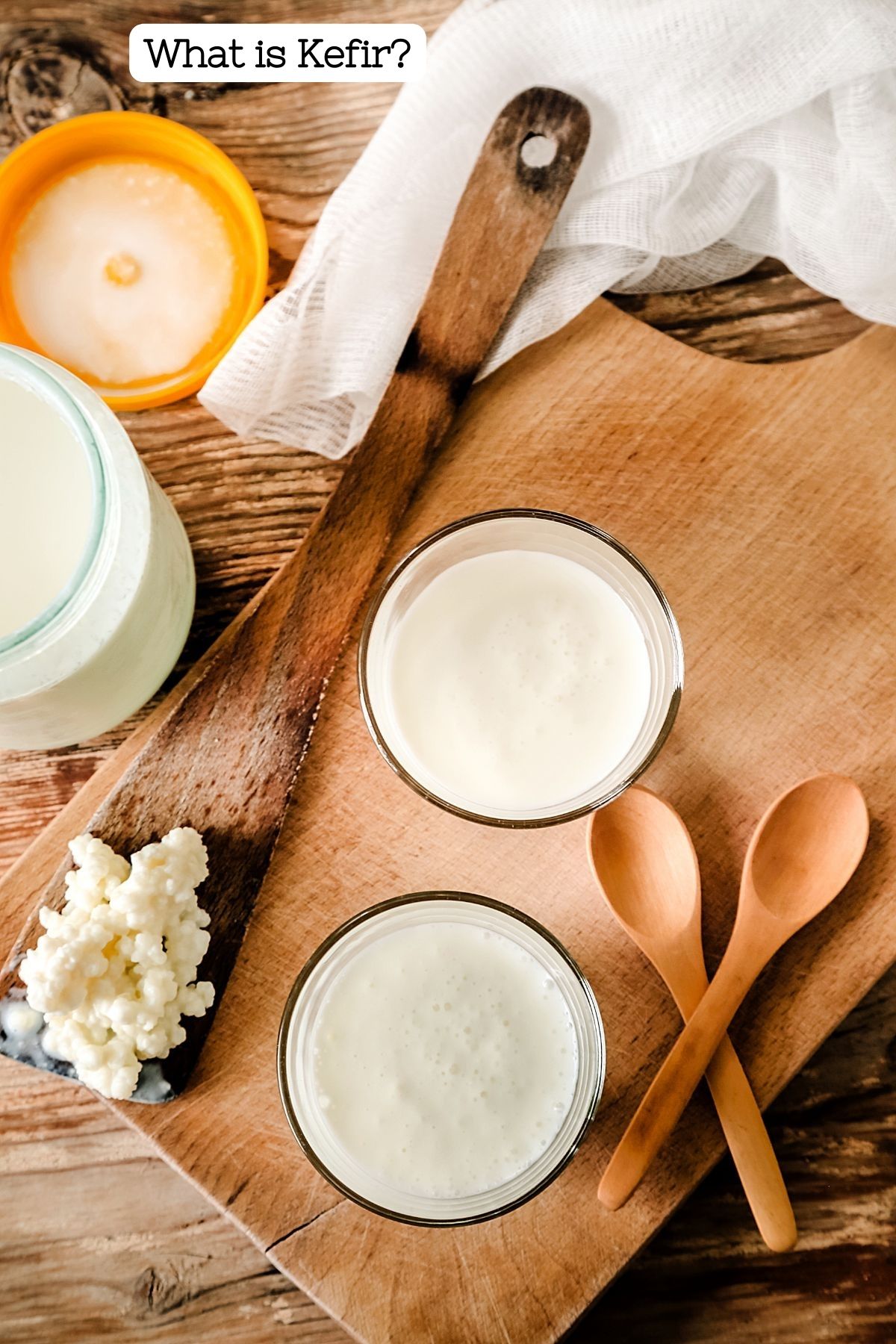
At its core, kefir is a product of milk fermentation, but it's not limited to just fresh or raw milk.
Kefir culture, comprising acetic acid bacteria, lactic acid bacteria, and beneficial yeasts, transforms various types of milk, including goat milk and non-dairy milk like coconut milk or soy milk, into a tangy and probiotic-rich elixir.
Simply mix your milk of choice with a small amount of the kefir grains or powdered starter and leave it at room temperature in a mason jar in order for the fermentation to work its magic.
At the heart of the kefir-making process lie the traditional kefir grains. These aren't your typical grains but rather gelatinous, cauliflower-like structures that act as a "mother culture."
They host a vibrant community of live cultures, including strains of beneficial bacteria and yeasts, responsible for the transformation of milk into kefir.
Whether you prefer the creaminess of fresh milk or opt for a dairy-free alternative, the magic of kefir culture remains consistent.
This culture sets kefir apart as a fermented drink with a unique taste and a host of potential health benefits.
In the upcoming sections, we'll explore the nuances of kefir grains, their role in the fermentation process, and how they stack up against kefir starters, all while keeping our focus on natural, holistic living principles.
What Are Kefir Grains?
Kefir grains are the traditional method and the heart and soul of the kefir-making process, and understanding their nature is vital for achieving good results and enjoying a continuous supply of this probiotic-rich elixir.
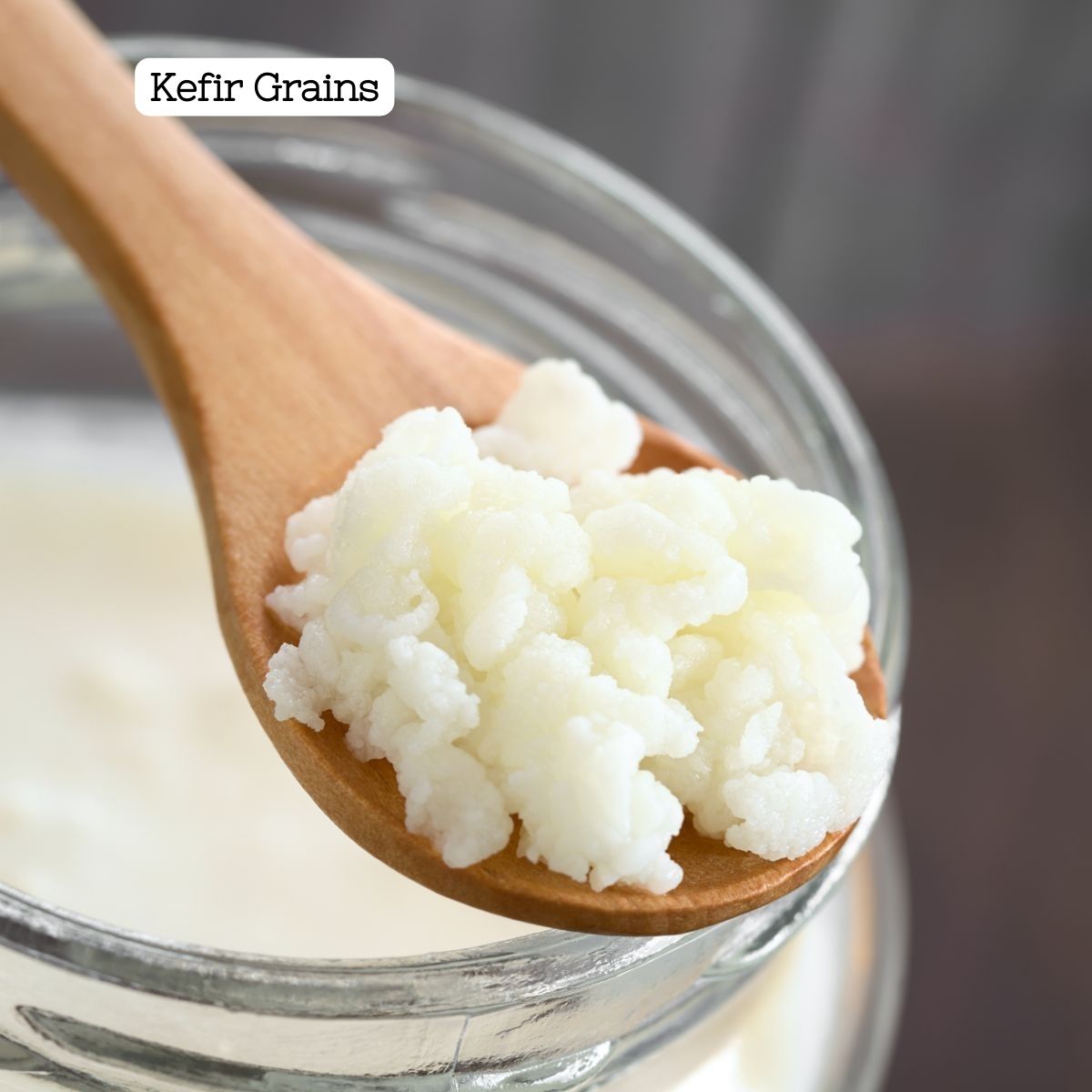
Living Cultures: Kefir grains are a unique combination of a symbiotic culture of bacteria and yeast (SCOBY).
These live kefir grains hold the secret to creating a new batch of kefir from a previous one, making them a valuable asset in your quest for healthful living that keeps giving.
Simply strain the grains from the kefir and save them for the next batch! Be sure to take proper care of your kefir grains.
Shelf Life and Revitalization: Like any living organism, kefir grains have a shelf life.
However, with proper care, they can be cultured for the long term. To keep them in top form, it's essential to periodically culture them in cow or goat milk for around 24 hours.
This revitalizes the grains as they feed on the milk sugar essential for their sustenance.
 Cultures for Health Milk Ke...Shop on Amazon
Cultures for Health Milk Ke...Shop on Amazon
Bacteria and Yeast in Kefir Grains
Kefir grains excel in transforming milk into a probiotic powerhouse.
The fermentation process is influenced by factors such as the temperature of your house and the season of the year, which can impact fermentation times.
Within the polysaccharide matrix of the grains, you'll find a complex community of probiotic strains of bacteria (like Lactobacillus and Bifidobacterium) and yeast strains (including Saccharomyces cerevisiae) working their magic.
Proper Care of Grains
To ensure your kefir grains thrive, provide them with the right conditions. Use the type of milk they're accustomed to, typically cow's milk or goat's milk for traditional grains.
If you prefer non-dairy options like coconut milk, start by rehydrating dehydrated grains in dairy or goat milk to activate them fully.
Regularly culturing them in cow or goat milk every few batches is necessary to replenish their vitality.
Versatile Grains: Natural kefir grains are versatile and can be cultured in various types of milk, even non-dairy alternatives like coconut milk or soy milk.
This adaptability allows you to enjoy the benefits of kefir while adhering to dietary preferences.
The End Result: Authentic kefir, made with live kefir grains, offers an abundance of good bacteria and potential health benefits. Whether you're savoring dairy-based or non-dairy kefir, these grains remain the key to producing a unique, probiotic-rich elixir.
 Lifetime Kefir Milk Kefir G...Shop on Amazon
Lifetime Kefir Milk Kefir G...Shop on Amazon
What is Kefir Starter?
Kefir starter is a convenient alternative to traditional kefir grains when it comes to crafting your own kefir.
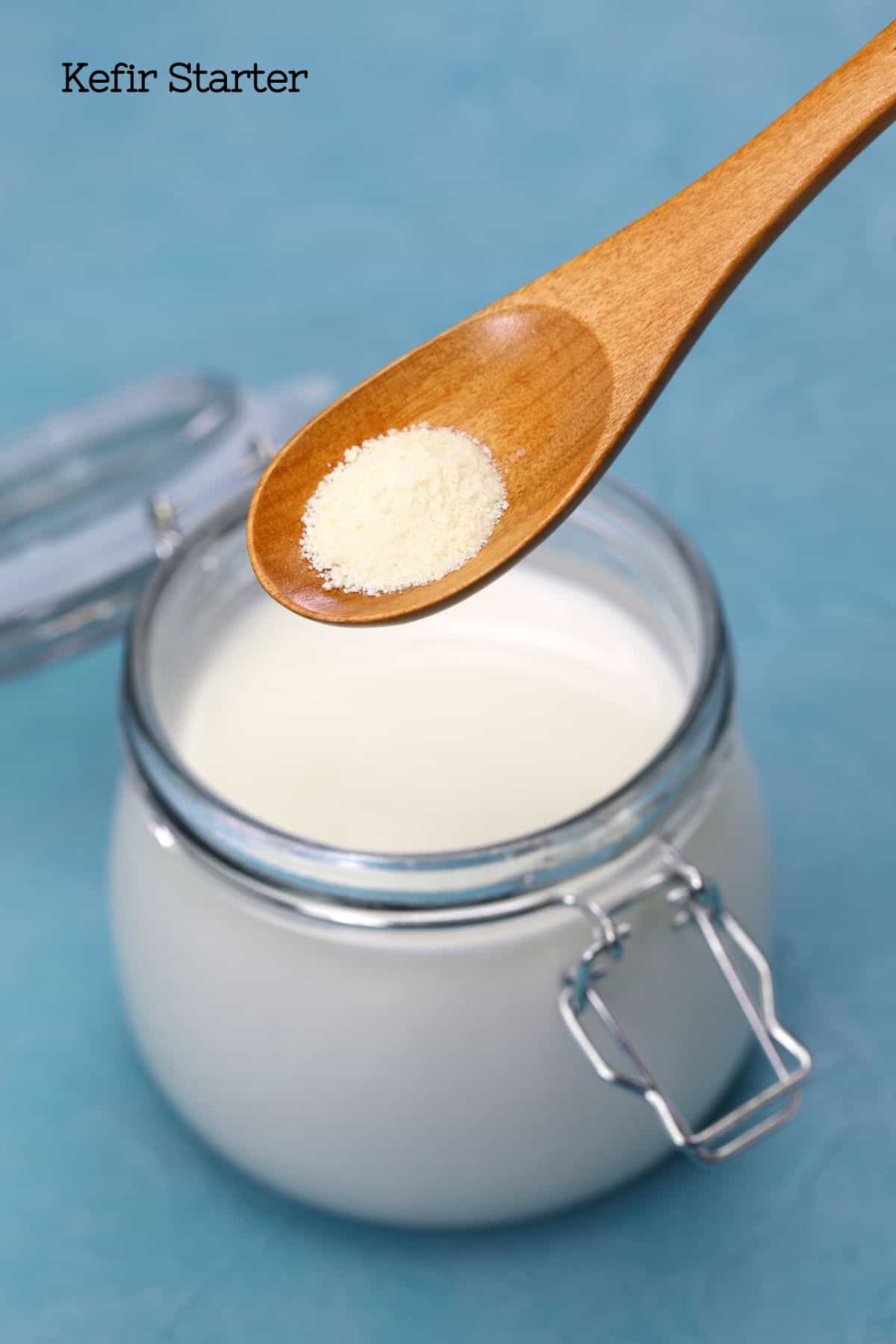
Unlike live kefir grains, kefir starter is available in a freeze-dried, powdered form, making it a straightforward choice for those seeking simplicity in their kefir-making process.
This freeze-dried kefir starter is often available in a powdered kefir starter culture, containing probiotic bacteria that kickstart the fermentation process. It's a user-friendly option, especially for those new to kefir-making.
Similar to a Yogurt Starter
Kefir starter operates on a concept similar to yogurt starters. It contains the necessary strains of bacteria and yeasts that are responsible for fermenting milk into kefir. Just like yogurt starter cultures, kefir starter simplifies the process and eliminates the need for live cultures.
 Cultures for Health Greek Y...Shop on Amazon
Cultures for Health Greek Y...Shop on Amazon
Using Kefir Starter
With kefir starter, you can easily initiate your kefir-making journey. It's as simple as adding a specified amount of the freeze-dried starter to your milk of choice. This streamlined approach ensures consistent results and saves you the effort of tending to live cultures.
Kefir starter is a simplified form of the cultures needed to make kefir. It doesn't contain the complex polysaccharide matrix found in traditional kefir grains.
Instead, it provides the essential microorganisms required for fermentation.
Making Multiple Batches
While kefir starter simplifies the process, it differs from traditional live grains in that it may not perpetually create new batches from a previous one.
The main difference is with kefir starter, you typically use a portion of the previous batch to inoculate the next, but it doesn't multiply like live kefir grains.
Versatility of Starter
Kefir powder starter allows you to experiment with various types of milk, including dairy and non-dairy options, to create different types of kefir. This versatility appeals to those with dietary preferences or restrictions.
In summary, kefir starter is a user-friendly alternative to traditional kefir grains, available in freeze-dried powder form.
It simplifies the kefir-making process by providing the necessary probiotic bacteria for fermentation.
While it doesn't replicate the perpetual nature of traditional grains, it's an excellent choice for those seeking a hassle-free way to enjoy the benefits of homemade kefir.
 Cultures for Health Kefir S...Shop on Amazon
Cultures for Health Kefir S...Shop on Amazon
 Yogourmet Kefir Starter (12...Shop on Amazon
Yogourmet Kefir Starter (12...Shop on Amazon
Grains vs Powder Starter
When it comes to crafting your own kefir, you have two primary options: traditional kefir grains and powdered kefir starter. Understanding the main differences between these two choices is essential for making an informed decision.
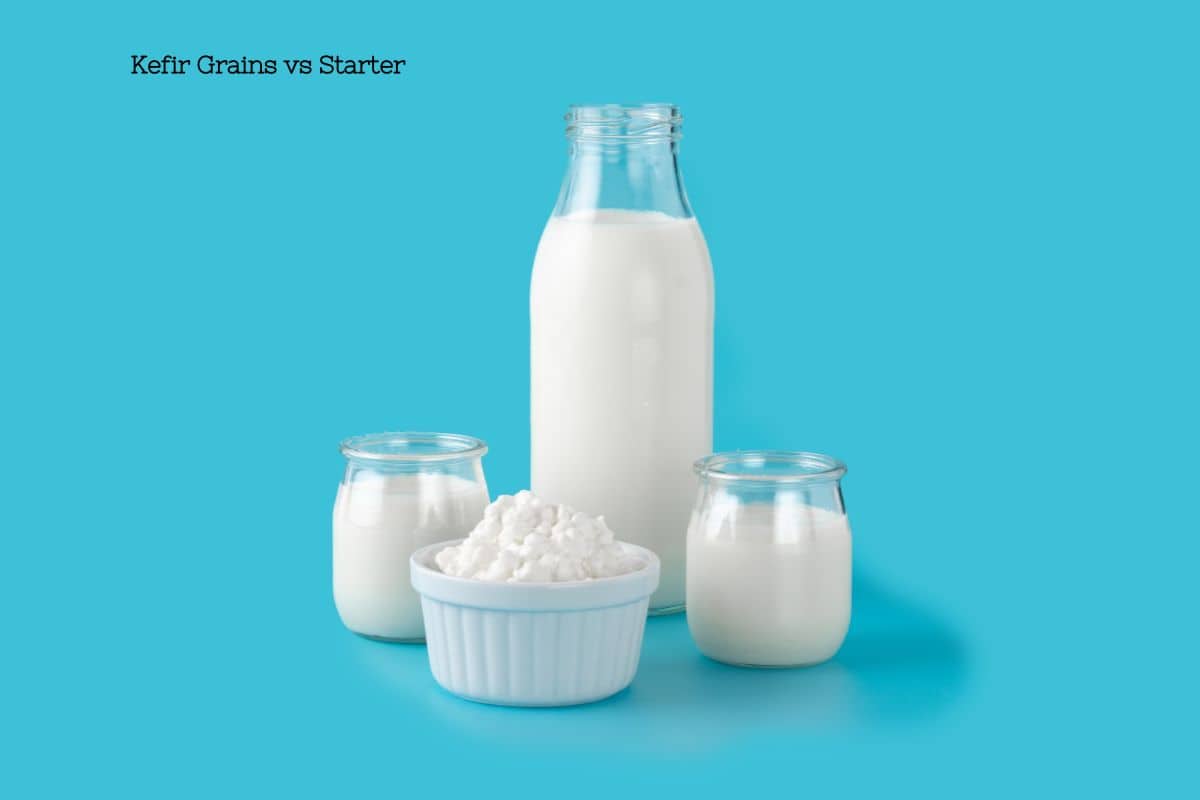
Traditional Kefir Grains
These are the real deal – small, natural grains composed of a complex polysaccharide matrix hosting a diverse community of probiotic bacteria and yeast strains.
The best thing about traditional grains is their ability to perpetually create new batches of kefir from a previous one. This continuous multiplication makes them a cost-effective and eco-friendly choice.
Powdered Kefir Starter
In contrast, kefir starter is a pure kefir starter culture, available in a freeze-dried, powdered form.
It simplifies the kefir-making process and doesn't require special equipment or elaborate care routines.
Using a powdered starter, you can create a new batch of kefir by inoculating milk with a specific amount of the starter or a small amount of the previous batch.
Diversity and Multiplication
One of the key differences is diversity. Traditional kefir grains are more likely to contain a diverse probiotic and yeast composition, contributing to a more complex flavor profile and potentially greater health benefits.
They also tend to multiply more efficiently, which means you can share them or use them for various milk drinks.
Carbon Dioxide Production
Another distinction lies in carbon dioxide production. Traditional grains produce more carbon dioxide during fermentation, resulting in a fizzier kefir compared to kefir made with powdered starter.
Essential Amino Acids
Traditional grains may also enhance the kefir's nutritional value by producing essential amino acids during fermentation. This can be particularly beneficial for your immune system and overall well-being.
Finished Kefir
Both traditional grains and powdered starter can yield a finished kefir, packed with probiotic goodness.
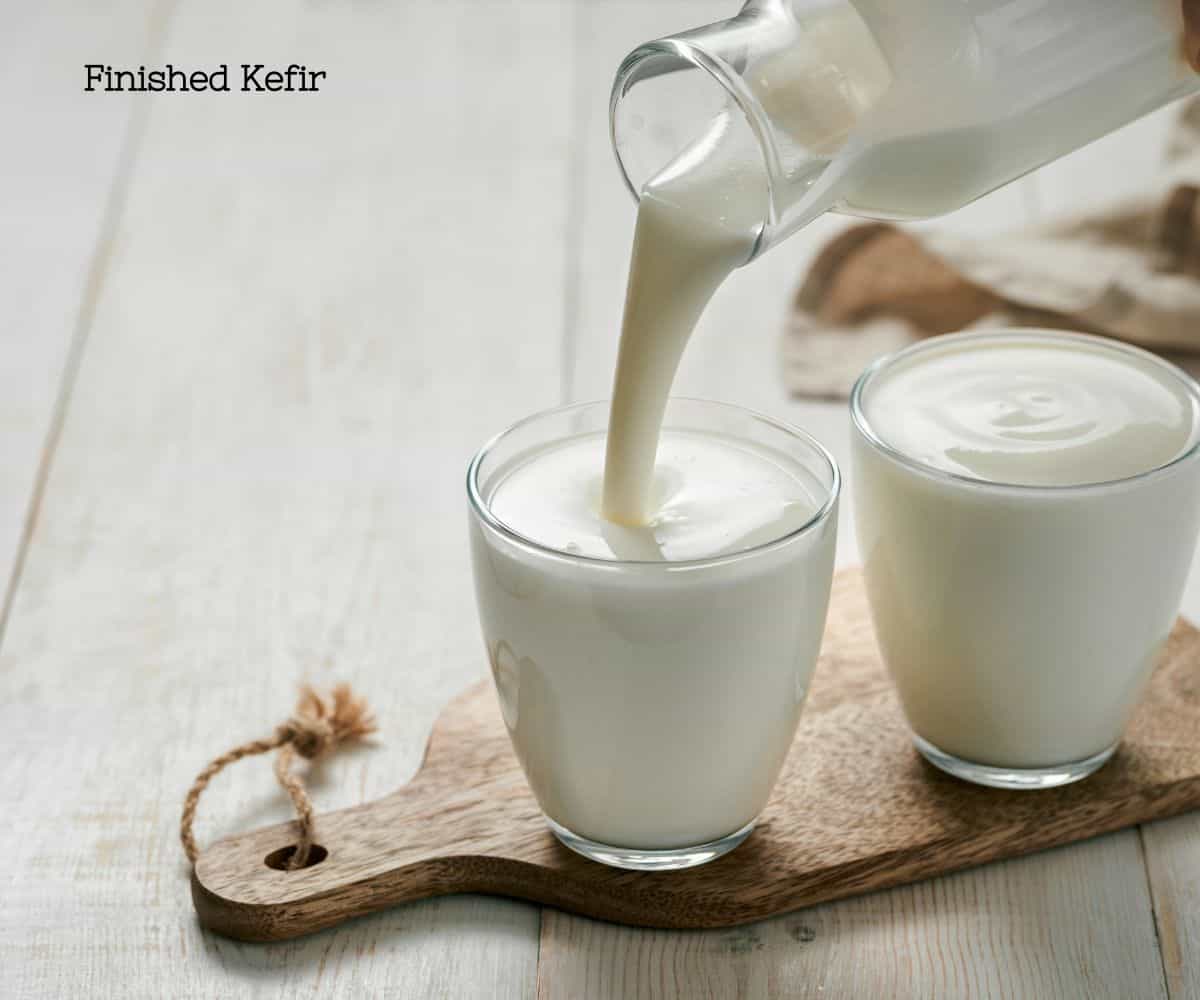
Finished Kefir
However, the path you choose depends on your preferences and priorities. If you value simplicity and convenience, a powdered starter might be the way to go.
On the other hand, if you seek a more natural, diverse, and potentially more probiotic-rich culture, traditional kefir grains are likely your best bet.
In the end, the choice between grains and powdered starter hinges on your individual needs and the kind of kefir-making experience you desire.
Both options have their merits, so consider what aligns best with your holistic nutrition and healthy living goals.
Other Probiotic Drinks and Starters
In addition to kefir, there are several other probiotic-rich beverages to consider:
Kombucha: Kombucha is a tangy, effervescent tea made using a SCOBY (Symbiotic Culture of Bacteria and Yeast).
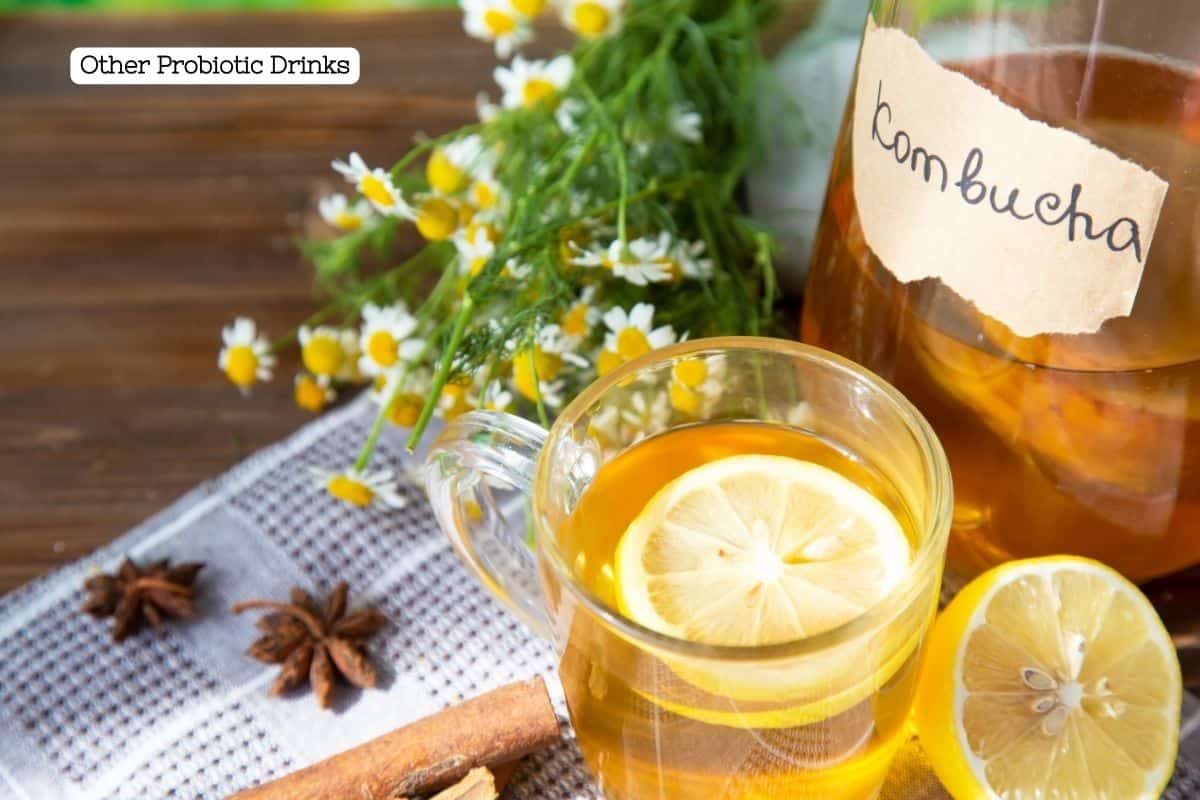
Unlike kefir, kombucha is brewed with sweetened tea, resulting in a uniquely fermented flavor profile.
Water Kefir: Water kefir uses dehydrated water kefir grains and ferments sugar water, coconut water, or fruit juice. It offers a milder, refreshing taste compared to milk kefir.
 Cultures for Health Water K...Shop on Amazon
Cultures for Health Water K...Shop on Amazon
ACV: Apple cider vinegar, primarily fermented by acetic acid bacteria, offers distinct health benefits and flavors separate from kefir. Always get ACV with "the mother" to reap the most benefits.
 Bragg Organic Apple Cider V...Shop on Amazon
Bragg Organic Apple Cider V...Shop on Amazon
Key Differences: Unlike kefir, these drinks differ in their base ingredients, flavors, and probiotic cultures.
Kefir has a creamy, tangy taste with a diverse probiotic profile. These alternatives have milder flavors and unique microorganisms.
Starters: Kefir uses traditional grains or powdered starter culture, while kombucha relies on a SCOBY, water kefir uses dehydrated grains, and fruit juice ferments may employ specific probiotic cultures or wild fermentation.
In summary, explore these probiotic beverages alongside kefir for diverse flavors and probiotic benefits to enhance your holistic nutrition and healthy living journey.
FAQ
No. These are two different ways to make the same drink. A kefir starter is a freeze-dried powder similar to what is in probiotic supplements. Kefir grains are live probiotic starter clusters that come in off-white clusters that look similar to cauliflower florets. Starters make a mild and relatively consistent batch of kefir while each batch of kefir grain kefir may vary. However, kefir grains will likely provide and more diverse health drink packed with essential nutrients, beneficial bacteria, and yeasts.
No. Kefir starter will make kefir when fermented with milk. However, to make another batch, you will need to either use more starter powder or reserve a small amount of the kefir to populate a fresh amount of milk.
Yes. Similar to yogurt starter, the freeze-dried probiotic powder will ferment and populate the milk when left at room temperature in a glass jar. However, the rate and amount of population will likely be less than that of kefir grains. W
Kefir thrives on milk sugar. If you leave the grains in too long, after they have already done their job, they may begin to lose potency. The best way to continue using kefir grains is to switch batches every 24 hours or let them rest for up to 3 days in between uses.
Conclusion
In the realm of probiotic-rich beverages, the choice between traditional kefir, powdered kefir starter, and alternatives like kombucha, water kefir, and fruit juice ferments offers a palate of flavors and health benefits.
Kefir, known for its tangy creaminess, excels in diversity, thanks to traditional grains. These grains continuously multiply, making them cost-effective and eco-friendly.
Powdered kefir starter simplifies the process, making fermentation accessible to newcomers. It provides essential probiotics but lacks the diversity of traditional grains.
Kombucha, driven by its SCOBY fermentation, offers a distinct tea-based flavor. Water kefir and fruit juice ferments bring milder, non-dairy options to the table.
Each of these beverages and starters has unique merits, offering varied flavors and probiotic profiles to support holistic nutrition and a healthy lifestyle.
Which fermented drink do you prefer? Let us know in the comments below! Don't forget to sign up for our newsletter and follow us on social media.
And as always, have a happy and healthy day!
Natalie


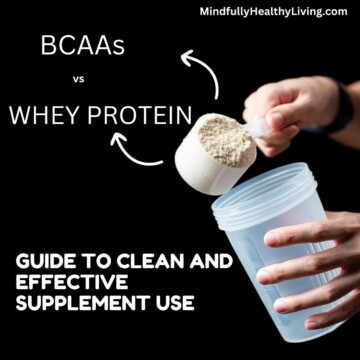
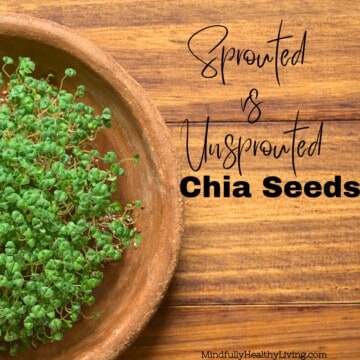
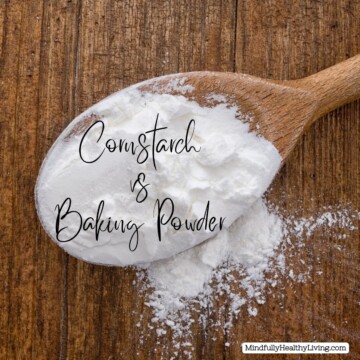






Comments
No Comments